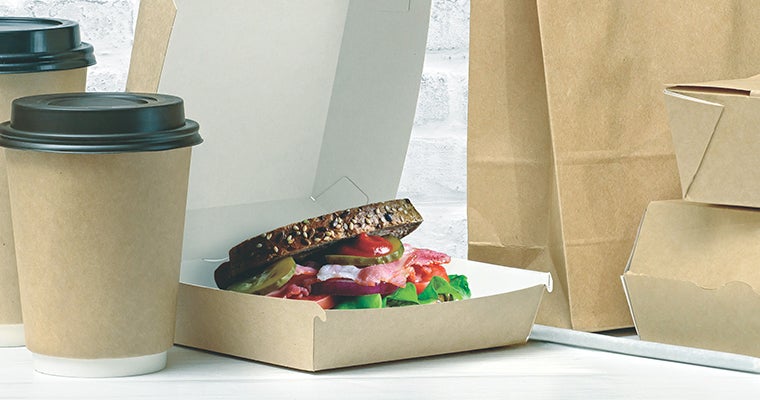Single-use disposables are getting greener all the time. Here’s a few tips for selecting and using them.
If being “green” is important to you and the people you serve, it makes sense to evaluate your single-use disposables. A good first step is to review the language suppliers commonly use in conjunction with their earth-friendlier products. Knowing what claims and labels really mean will ease your decision-making.
Made with renewable resources. These products typically include plant-based materials that can be replenished in the environment. (Unlike oil and minerals.)
Made from recycled materials. Signifies that a portion of a product is made from waste that has been diverted from landfills.
Compostable. Compostable items are capable of decomposing into a rich soil-like material through controlled processes that only occur in a commercial composting facility.
Biodegradable. Biodegradable materials decompose into simpler organic compounds through natural biological processes—but this typically happens very slowly in landfills.
ASTM D6400. A third-party certification used to label plastics, paper products, foam, food packaging and other solid materials designed to be composted.
ASTM D6868. This third-party certification confirms the compostability of biodegradable plastics used as coatings on paper and other substances.
Composter Approved. Independent verification that a product has been field-tested and will decompose in a composting facility.
Go green smartly.
Factors to consider when evaluating green disposables:
1. Set your own green standards.
Let your brand and your customers dictate your green strategy.
2. Consider the cost.
Keep in mind that green can come with a higher price tag.
3. Prioritize performance.
Keeping food hot, cold, safe and secure has to be job one.
4. Market your program.
Plan to promote your sustainability efforts.
5. Think front and back of the house.
Green isn’t just for takeout—there are eco-friendly dine-in disposables as well.










